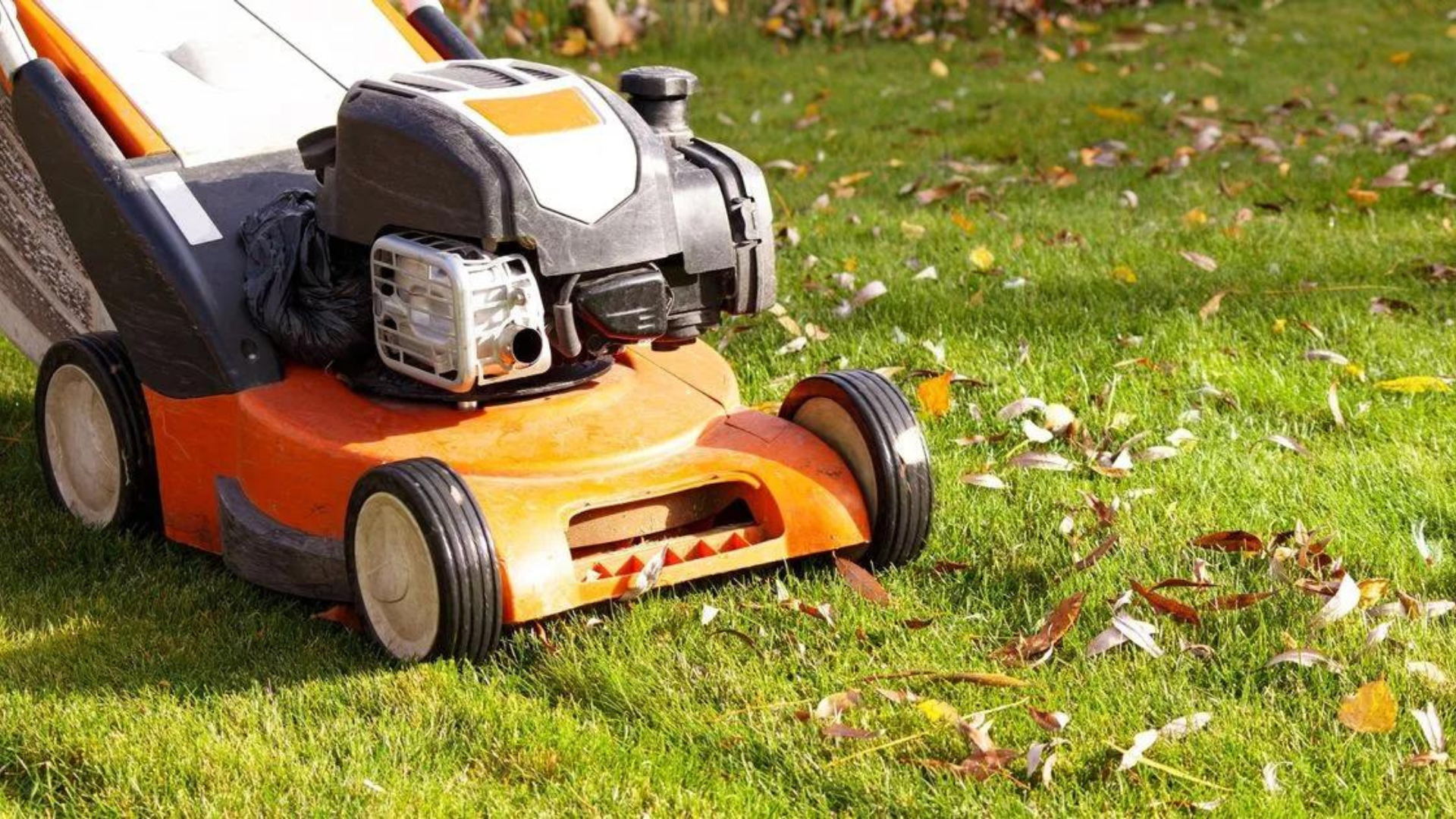Expert reveals the exact temperature you should stop cutting your grass
It's sooner than you think!


Now that the colder days are upon us, many people may be tempted to put their lawnmower away until spring. However, for those keen gardeners looking to keep their lawn in pristine condition all year round, garden expert at Gazeboshop, Samantha Richards, has revealed the exact temperature you should stop mowing your grass. Knowing this key piece of information will stop you making any of these 7 lawn mowing mistakes, guaranteeing you a luscious green garden by the time the weather warms up again.
Samantha says "the key to protecting your grass as temperatures plummet is recognising when to stop mowing your lawn. As a general rule of thumb you should avoid using your lawnmower when the temperature consistently drops below 10 degrees celsius, which usually happens in late October or November. When the temperature dips below this point, the grass will enter its dormant stage and stop growing."
“It’s worth noting the ideal grass height going into winter is around two inches; long enough so that the grass still provides shade to the soil and protection to the roots, but also short enough to avoid attracting mould or fungus and becoming a shelter for insects and pests.
“In the build-up to winter it is best practice to take your lawn down bit by bit, reducing the blade height each time until you reach two inches. Although it is not advised, for those adamant on mowing their lawn throughout the colder months make sure you raise the cut to the highest setting to protect your grass as best as possible.”
7 top tips for protecting your lawn ahead of winter
Getting the final cut right does not mean you’re done for the winter - there is still work to do to ensure your lawn remains in top condition. Below, Samantha Richards has shared her seven essential jobs you should carry out in the garden this month before the temperature drops.
1. Pack away garden furniture
One of the easiest but most important jobs to tick off is taking down any outdoor garden furniture that sits on your lawn.
Get all the latest news, reviews, deals and buying guides on gorgeous tech, home and active products from the T3 experts
Most of us are familiar with how different our grass looks when you move furniture after just a couple of days. The yellowy colour change is due to sunlight and rain water being blocked from the soil and is a tell-tale sign of poor grass health.
If you do have space in your shed or a sheltered patio area then storing any furniture here over the winter months will do wonders for the health of your grass as well as the durability of your furniture.
2. Remove weeds
One job that should be top of your list is to remove any weeds as soon as you spot them growing on your lawn.
By digging out these unwanted growths as soon as possible you limit the weeds ability to spread throughout your turf and prevent a bigger job usually involving weed killer further down the line.
3. Trim edges
With the accelerated growth your grass experiences in summer, autumn is the perfect time to trim back overgrown edges to keep your lawn looking neat and tidy.
The edges when looked after will provide a barrier for plant roots, stopping flowers or weeds from growing into your lawn.
4. Sweep away leaves
Regularly raking your lawn is a must. You should aim to feel as though you’re lightly brushing the top of your grass to remove the debris as raking too deeply can damage the turf.
Remove the layers of thatch-like dead grass, leaves and moss which prevent water from reaching the soil and roots.
5. Fertilise
Fertilising is usually associated with spring and the warmer months to encourage growth but you can actually buy fertilisers designed for the colder seasons too.
Using an autumn or winter fertiliser will strengthen your grass and put it in a strong position to endure harsher weather.
One thing to bear in mind is not to fertilise your lawn when the grass is dormant as it won’t be able to benefit from the nutrients you are supplying it with.
6. Aerate
Spiking your lawn will allow for better movement of air as well as creating a passage for rain water and nutrients to reach the roots.
Consistently aerating your lawn will put it in good stead to survive the more extreme conditions that will be approaching in the coming months. You don’t need any fancy tools for this, a garden fork from the shed will do.
7. Treat bare patches
Bare patches on your lawn can be caused by a whole host of reasons - from heavy kids toys to pet urine, or the most recent heatwave in September drying the soil out completely.
Luckily autumn is one of the best times to fix any of these spots. A bag of compost, seed and fertiliser will go a long way to help fix the issue and with persistent watering, you should see some growth within a couple of weeks.
Interested in more? Check out these garden expert resourceful tips for autumn gardening.

Lizzie is T3's Home Living Staff Writer, covering the latest in smart home, lifestyle and beauty tech. From skincare gadgets to vacuum cleaners, she's your go-to for trends and top recommendations.
When not writing, Lizzie enjoys mooching around Bath, spending time with loved ones, or testing her review units – often during an enthusiastic cleaning spree!